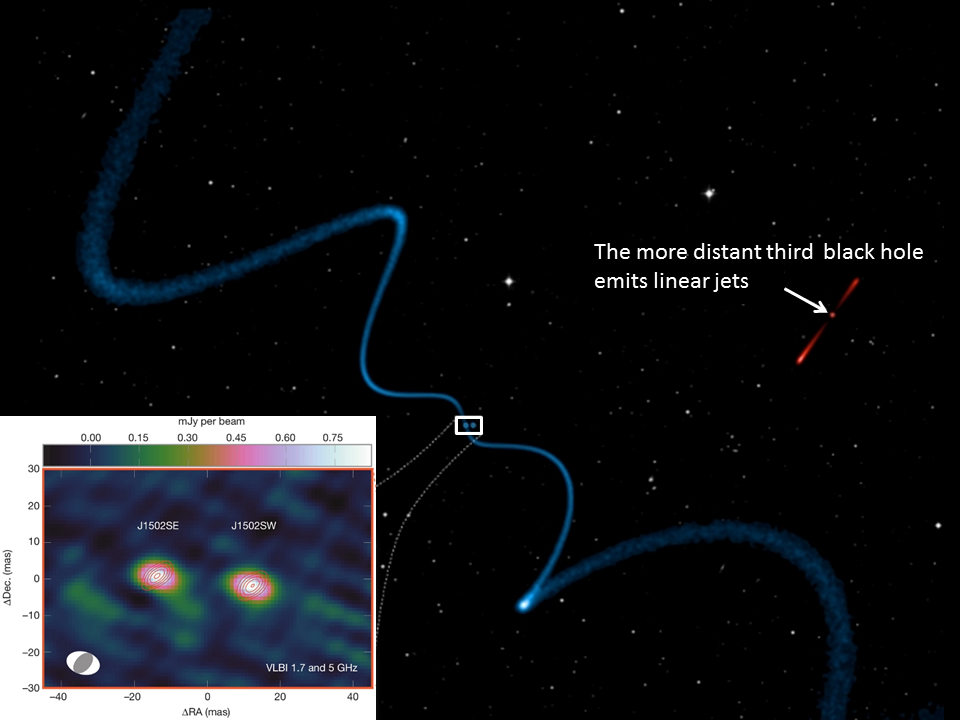Daily Image
26-06-2014Trio of supermassive black holes shakes space-time
| Submitter: | Zsolt Paragi |
| Description: | Supermassive black holes in the centre of galaxies play an important role in the evolution of their hosts. How these giant black holes were formed in the first place and how they grew with time is not clearly understood, but galaxy mergers -that may have eventually led to the merging of their central black holes- appear to be a natural explanation. If this is true, then one expects to see a number of dual or even multiple supermassive black hole systems in some galaxies. However, we only know of very few examples so far, in particular at low separations. Very Long Baseline Interferometry (VLBI) is a powerful tool to find and confirm close pairs of supermassive black hole systems due to its great resolution. Dr. Roger Deane et al. announced the discovery of a triple black hole system in which the tight inner pair of black holes were resolved by the European VLBI Network (EVN). The Westerbork Synthesis Radio Telescope was part of the observations, and the data were correlated at the Joint Institute for VLBI in Europe in Dwingeloo. These systems are important for various reasons. In terms of galaxy evolution it is known that black holes -especially in active galactic nuclei (AGN)- influence how galaxies evolve, and understanding how often black holes themselves merge is key to this work. Furthermore, closely orbiting systems such as this are sources of gravitational waves in the Universe, if General Relativity is correct. Future radio telescopes such as the SKA will be able to measure the gravitational waves from such systems as their orbits decrease. While the VLBI technique was essential to discover the inner two black holes (which are in fact the second closest pair of supermassive black holes known), Deane and co-authors have also shown that the binary black hole presence can be revealed by much larger scale features. The orbital motion of the black hole is imprinted onto its large jets, twisting them into a helical or corkscrew-like shape. So even though black holes may be so close together that our telescopes can tell them apart, their twisted jets may provide easy-to-find pointers to them, much like using a flare to mark your location at sea. This may provide sensitive future telescopes an additional way to find binary black holes with much greater efficiency. The image shows a sketch of the triple system with helical jets from one of the supermassive black holes. The third black hole is part of the system, but farther away and is likely to emit relatively straight jets. The inset shows the EVN 1.7 GHz image (contours) overlaid on the EVN 5 GHz image (colour scale). The results are published in Nature: http://dx.doi.org/10.1038/nature13454 See also the JIVE press release here: http://www.jive.nl/trio-supermassive-black-holes-shake-space-time P.S. An important part of the above results was obtained by using the hugely successful MeqTrees package, developed under the leadership of our (former) colleagues at Astron. |
| Copyright: | R. P. Deane et al. |
| Tweet |  |
